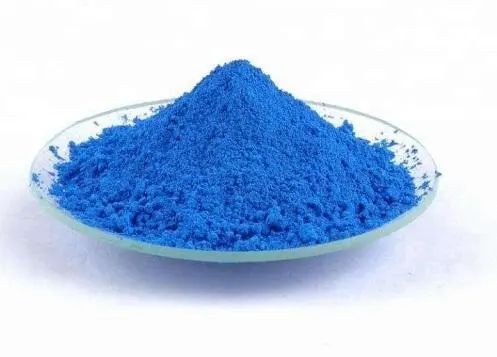In daily life, we often see sliced apples being oxidized in the air, and the flesh gradually turns from white to yellow brown. However, our human body also experiences this kind of oxidation. The human body continuously produces free radicals due to continuous contact with the outside world, including respiration (oxidation reaction), metabolism, external pollution, radiation exposure, and other factors.
The production of moderate free radicals not only provides and transmits energy for cells to maintain life activities, but also serves as the initiator and regulator of various metabolic and signaling pathways in our body; Excessive free radicals have an impact on the human body, ranging from causing skin relaxation and dullness to accelerating aging; Severe cases may lead to cancer or other diseases.

Studying antioxidants can effectively overcome the harm caused by excessive free radicals, so antioxidants are not only the main research and development direction of health products and cosmetics companies, but also an important functional demand in the market. Glutathione is one of the important research products.
glutathione
Glutathione, as an important metabolic and antioxidant substance in cells, is not only a cofactor of glyceraldehyde phosphate dehydrogenase, but also a coenzyme of glyoxalase and malondialdehyde dehydrogenase. It participates in the tricarboxylic acid cycle and sugar metabolism in the body and can activate various enzymes, such as thiol (SH) enzyme coenzyme, to promote sugar, fat, and protein metabolism. The characteristic of GSH molecules is the presence of active thiol groups (- SH), which are the most important functional groups. They can participate in various important biochemical reactions in the body, protect important enzyme proteins from oxidation and inactivation of thiol groups, and ensure energy metabolism and cellular utilization. At the same time, it can directly reduce free radicals to acidic substances by binding with thiol groups in the body, thereby accelerating the excretion of free radicals and combating the damage of free radicals to important organs.
Products List
| Category | Subcategory | Product Name | Catalog Number | Price |
|---|---|---|---|---|
| Enzyme Kits for Nutrients and Metabolites | Amino Acid Metabolism Assay Kits | Glycine Assay Kit (Fluorometric) | EK0015 | Online Inquiry |
| Enzyme Kits for Nutrients and Metabolites | Enzymatic Activity Assay Kits | Glyoxalase I Activity Assay Kit | EK0096 | Online Inquiry |
| Enzyme Kits for Nutrients and Metabolites | Enzymatic Activity Assay Kits | Reduced Glutathione Assay Kit (Colorimetric) | EK0140 | Online Inquiry |
| Enzyme Kits for Nutrients and Metabolites | Metabolism Assay Kits | Thiol Assay Kit (Fluorometric) | EK0262 | Online Inquiry |
| Enzyme Kits for Nutrients and Metabolites | Nutritional Analysis and Quantitation | Antioxidant Assay Kit | EK0271 | Online Inquiry |
| Enzyme Kits for Nutrients and Metabolites | Nutritional Analysis and Quantitation | Ferric Reducing Antioxidant Power (FRAP) Assay Kit (Colorimetric) | EK0279 | Online Inquiry |
| Enzyme Kits for Nutrients and Metabolites | Nutritional Analysis and Quantitation | Total Antioxidant Capacity Assay Kit | EK0310 | Online Inquiry |
| Biosynthesis Chemicals | Antioxidants | Glutathione ethyl ester | BC-0710 | Online Inquiry |
| Biosynthesis Chemicals | Antioxidants | Reduced Glutathione (GSH) | BC-0738 | Online Inquiry |
| Biosynthesis Chemicals | Other Biochemicals | GSNO | OB-0014 | Online Inquiry |
In 2009, a foreign research team published an article in Antioxid Redox Signal. This article discusses the key role of mitochondrial glutathione in antioxidant activity.

Mitochondria are the main intracellular site of oxygen consumption and the main source of reactive oxygen species (ROS), with the majority coming from the mitochondrial respiratory chain. In the antioxidant and detoxifying enzyme library present in mitochondria, mitochondrial glutathione (mGSH) becomes the main line of defense for maintaining an appropriate mitochondrial redox environment to avoid or repair oxidative modifications that lead to mitochondrial dysfunction and cell death. The importance of mGSH lies not only in its abundance, but also in its multifunctionality in counteracting hydrogen peroxide, lipid hydroperoxides, or exogenous substances, mainly serving as a cofactor for enzymes such as glutathione peroxidase or glutathione-S transferase (GST). Moreover, increasing mGSH levels has an improving effect on different pathological environments such as hypoxia, ischemia/reperfusion injury, aging, liver diseases, and neurological diseases.
In 2023, researchers published an article in Vitamins and Hormones. It describes the essential antioxidant effect of reduced glutathione in mammalian cells.

Reduced glutathione (GSH) is an essential non enzymatic antioxidant in mammalian cells. Glutathione can directly act as an antioxidant, protecting cells from free radicals and pro oxidants, and can also serve as a cofactor for antioxidant and detoxifying enzymes such as glutathione peroxidase, glutathione S-transferase, and glyoxalase. Glutathione peroxidase detoxifies peroxides by coupling with the oxidation of glutathione to glutathione disulfide (GSSG). GSSG is converted back to GSH through glutathione reductase and cofactor NADPH. Glutathione (GSH) can regenerate vitamin E after a detoxification reaction between vitamin E and lipid peroxidation free radicals (LOO ·). Glutathione is a cofactor of GST in the detoxification process of electrophilic and exogenous substances. Methylglyoxal and glyoxal induced dicarbonyl stress are alleviated by glyoxalase and glutathione. GSH regulates redox signaling by reversibly oxidizing key protein cysteine residues through S-glutathioneization. Glutathione glyceramide is involved in other cellular processes, such as protein folding, protecting protein thiols from oxidation and cross-linking, disulfide bond protein degradation, cell cycle regulation and proliferation, ascorbic acid metabolism, cell apoptosis, and iron death.









